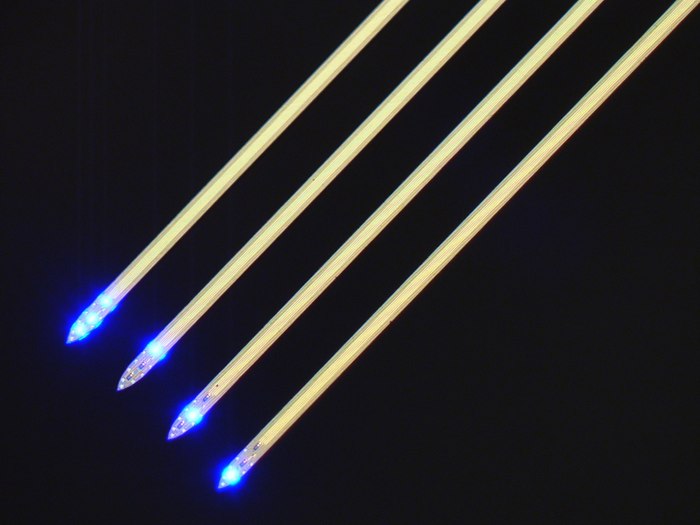Alzheimer’s, autism, cerebral palsy — before cures for these neurological disorders and more can be found, scientists must develop a deeper understanding of how neurons in the brain communicate with one another. Researchers at the University of Michigan recently developed what are said to be the smallest LED probes to be implanted in a living brain.
In the field of optogenetics, implanted optical fibers are used to stimulate brain cells by exposing them to pulses of light, and a second device records how they react. Scientists at the University of Michigan found that this setup can’t record the manner in which neurons communicate with one another, but the new probes are capable of doing just that.

Each probe is less than a tenth of a millimeter wide and contains 12 LEDs that are no larger than a neuron's cell body, along with 32 electrons. Image source: University of Michigan.
Containing 12 LEDs each that are no larger than a neuron’s cell body, along with 32 electrons, each probe is less than a tenth of a millimeter wide. According to the study, any one LED can activate a single neuron, and when it does, the electrons are able to detect any responses from other neurons in the surrounding network. The probes can control and record the activity of many individual neurons, measuring how changes in the activity of a single neuron can affect its neighbors.
The technology has already been tested on mice at New York University in a study on how the rodents form memories.
“Now we can know how a group of cells, both adjacent and farther away, are responding to the activation of a single cell,” said UM postdoctoral researcher, Fan Wu. “This will help us better understand how these cells are communicating with each other.”
An article on the probes was recently published in the journal Neuron.
Source: University of Michigan
Advertisement
Learn more about Electronic Products Magazine





